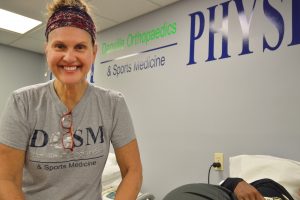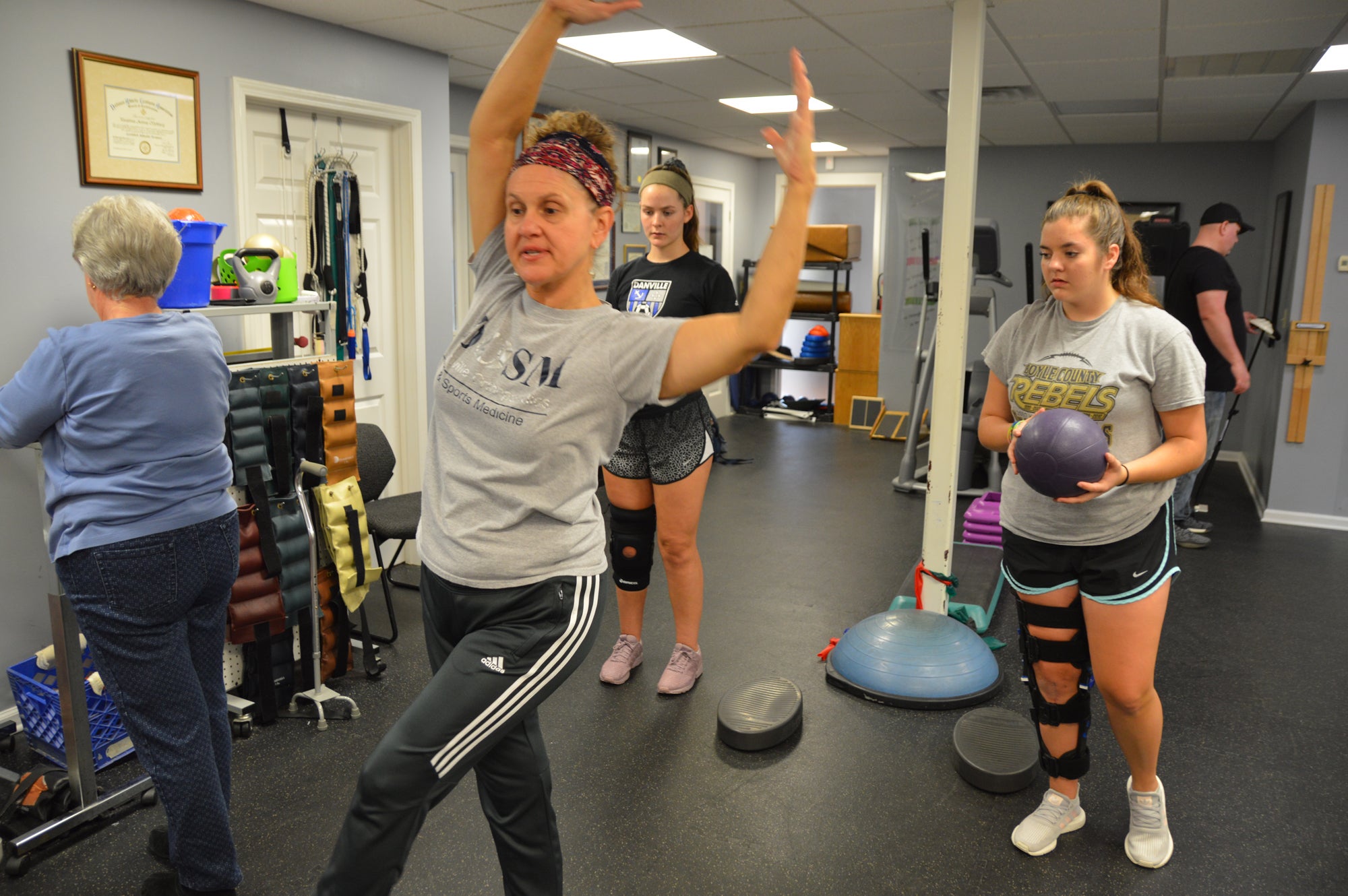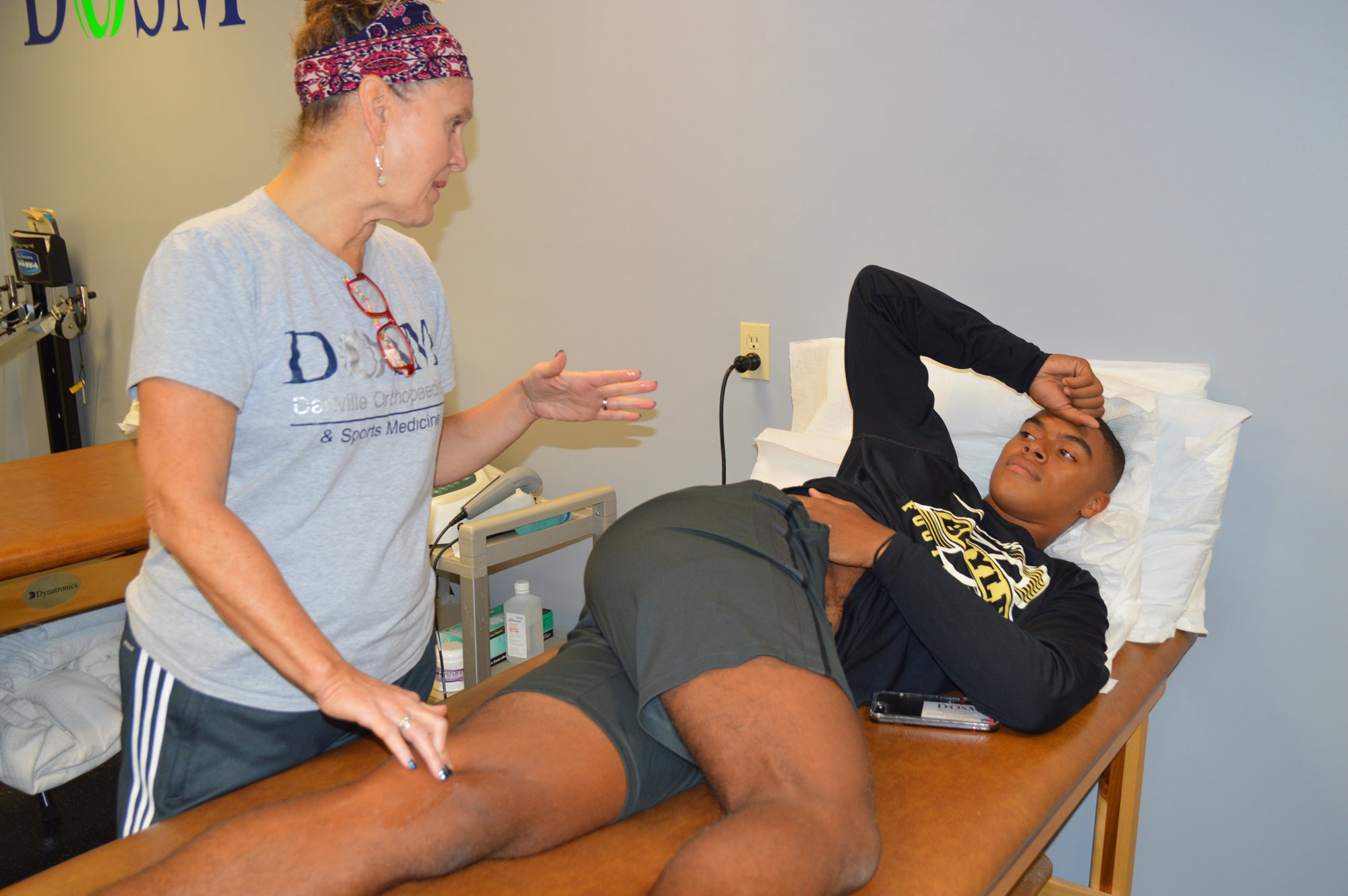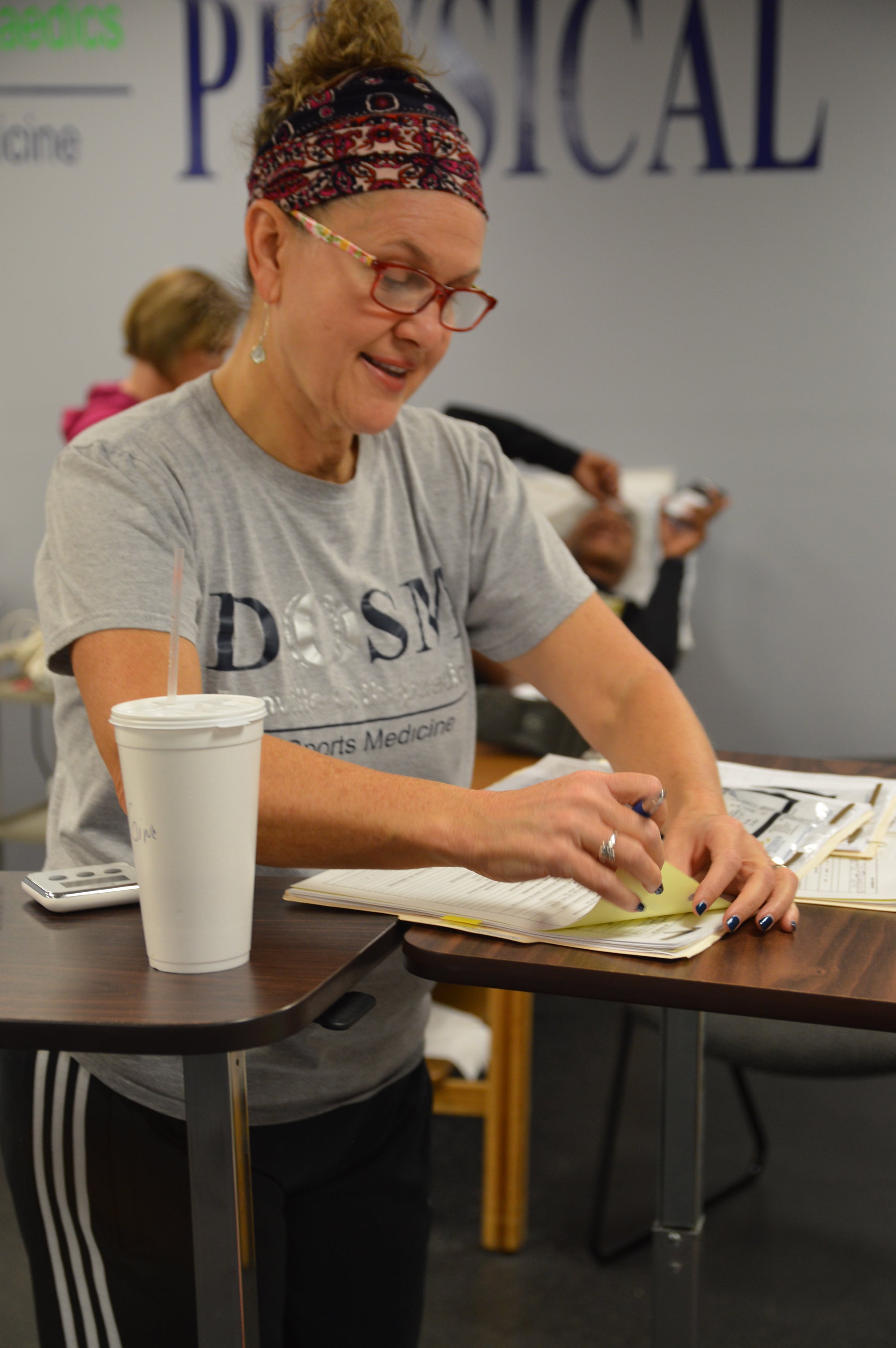‘I love the people’ Physical therapist had unique road into career, says people are best part
Published 6:36 am Wednesday, November 14, 2018

- Photos by Bobbie Curd/bobbie.curd@amnews.com Physical therapist Gina Motley, front, shows Danville soccer player Ella McKinney, left, and Jolie Gardner, a Boyle County soccer player, exercises in order to rehabilitate their ACL injuries.
Gina Motley considers herself a “fossil.” She says this because she didn’t get into physical therapy the traditional way. “I’ve been doing PT since ‘97, but I was an athletic trainer for nine years before that, in professional tennis.”
She’s not kidding — she’s trained the likes of Pete Sampras, Andre Agassi, Jim Courier … But the only way you’d know is by getting a glimpse inside one of the treatment rooms at Danville Orthopedics Sports Medicine Physical Therapy, where autographed, framed stories and magazine covers hang on the wall.
Her “fossil” joke is in regards to first getting her undergrad in human studies; then a master’s in sports medicine; going on to work as a professional tennis trainer; then going back for her physical therapy master’s. She also has a partial master’s in exercise physiology.

Photos by Bobbie Curd/bobbie.curd@amnews.com
Physical Therapist Gina Motley was an athletic trainer in professional tennis 9 years prior to becoming a PT in ’97.
On a Thursday afternoon, the open treatment room is buzzing with clients. On one table, she works with Boyle County High School junior Landon Bartleson, a football player with an injury, using a creative work-around.
“So this is called instrument-assisted myofascial release,” Gina says, as she uses the handle-end of a baby spoon — a much cheaper answer to an expensive instrument — rubbing the inside of Landon’s knee after applying a lubricant. The area starts to “light up,” turning red and getting a bit puffy.
Landon pulls out his phone, which has a video on the specific play where three players hit him on the field. “Oh yeah, I can see it, right there …” she says, watching the play.
Most of the afternoons at the clinic are filled with sports kids. Gina says they work pretty closely with athletic trainers at most of the schools, and she sings those trainers’ praises, explaining what a demanding job it is. The clinic caters to a lot of students later in the day so they don’t have to take off from school.
Gina has worked with patients from 4 to 97 years old. On an average day, she sees about 15-18 clients. “Different people require different needs. The more elderly patients need more tender-loving care, so we may need to see them alone. But some we can see together, like these two right here …”
Ella McKinney, a Danville soccer player, hits the stairmaster for an ACL injury, while Jolie Gardner, a Boyle County soccer player, starts stretching exercises by balancing against a pole.
“I love it; we’ve got Boyle County and Danville soccer, working side-by-side,” Gina says, in her always-friendly, booming voice.
With their office on South Third Street, just a walk across Fig Alley to the hospital, Gina says it’s a perfect situation. They are partners with Danville Orthopedics, run by four doctors located next door, and it makes it easy to sprint across for more information if needed, or a prescription, for example.
She goes to a locked cabinet and pulls out a syringe with a long needle, and finds Landon’s bottle of medicine. She fills the needle with anti-inflammatory and injects it into a pad she affixes to the problem area.
The best part of her job, by far, is working with people. And she’s good at it. She has affectionate nicknames for her patients and an overall, glowing attitude that commands the room.

Motley reviews a hit Boyle County running back Brandon Bartleson took recently during a game, possibly resulting in the injury she’s treating him for.
“I love the people,” she says. The paperwork is the worst part, but hopefully that will be relieved soon when they go to EMR — electronic medical records system.
“We’ve hesitated to do it. We didn’t grow up in the computer age, so it’s hard for us to just naturally go to that,” she says, laboring over a stack of pages, noting patients’ conditions. Maybe they document too much, she says — they include what patients look like, how they carry themselves or are walking, and how they’ve changed since their last visit, describing things like “movement transitions made with more ease,” etc.
A timer goes off and she takes Ella and Jolie into the middle of the room after giving them weight balls, demonstrating each exercise they must complete. She watches their form, telling them where they should be feeling it, what not to do …
She goes back over to Landon, and hooks him up to a tens unit — a device delivering electronic nerve stimulation. “You feeling that yet, Land-O?” she asks. “Oh, yeah,” he says, nodding. “It’s real good and real strong …”
She turns to Ellie and Jolie, and gives them their next set. “Bent and then straight-legged, 10 times,” she yells. She stops to explain to one of them what they may be feeling and why, explaining the pops she’s feeling as the patella riding a little out of the groove.
Gina normally gets into the office around 7:30 in the mornings, and is there until 6:30 or 7 at night, four days a week.
“You’ll have these tremendous athletes who come in here, and they’ll shake like a leaf at the smallest exercise, and some are predisposed to injuries due to that,” she says.
“Now, stand on the bad leg, ball over the head, make sure you’re going forward and backward, forward and backward. Ready? And go!”
She explains how the exercises are designed to prepare them with dynamic movements, to be stable whenever their foot hits the ground. Most of the time, she says females get ACL injuries somewhere on the field, away from the ball; males’ are usually a result of them getting hit.
“I tell everyone, what physical therapy brings together let no man put asunder. Friendships are made in physical therapy. I’ve had people get married who met in therapy.”
- Photos by Bobbie Curd/bobbie.curd@amnews.com Physical therapist Gina Motley, front, shows Danville soccer player Ella McKinney, left, and Kolie Gardner, a Boyle County soccer player, exercises in order to rehabiliate their ACL.
- Photos by Bobbie Curd/bobbie.curd@amnews.com Physical therapist Gina Motley, front, shows Danville soccer player Ella McKinney, left, and Jolie Gardner, a Boyle County soccer player, exercises in order to rehabilitate their ACL injuries.
- Photos by Bobbie Curd/bobbie.curd@amnews.com
- Photos by Bobbie Curd/bobbie.curd@amnews.com
- Photos by Bobbie Curd/bobbie.curd@amnews.com Motley reviews a hit Boyle County running back Brandon Bartleson took recently during a game, possibly resulting in the injury she’s treating him for.
- Photos by Bobbie Curd/bobbie.curd@amnews.com
- Photos by Bobbie Curd/bobbie.curd@amnews.com
- Photos by Bobbie Curd/bobbie.curd@amnews.com
- Photos by Bobbie Curd/bobbie.curd@amnews.com
- Photos by Bobbie Curd/bobbie.curd@amnews.com
- Photo by Bobbie Curd Physical Therapist Gina Motley sets Ella McKinney up on the elliptical machine. Ella is a Danville High School soccer player and is working through recooperation after an ACL surgery.
- Photos by Bobbie Curd/bobbie.curd@amnews.com
- Photos by Bobbie Curd/bobbie.curd@amnews.com
- Photos by Bobbie Curd/bobbie.curd@amnews.com























